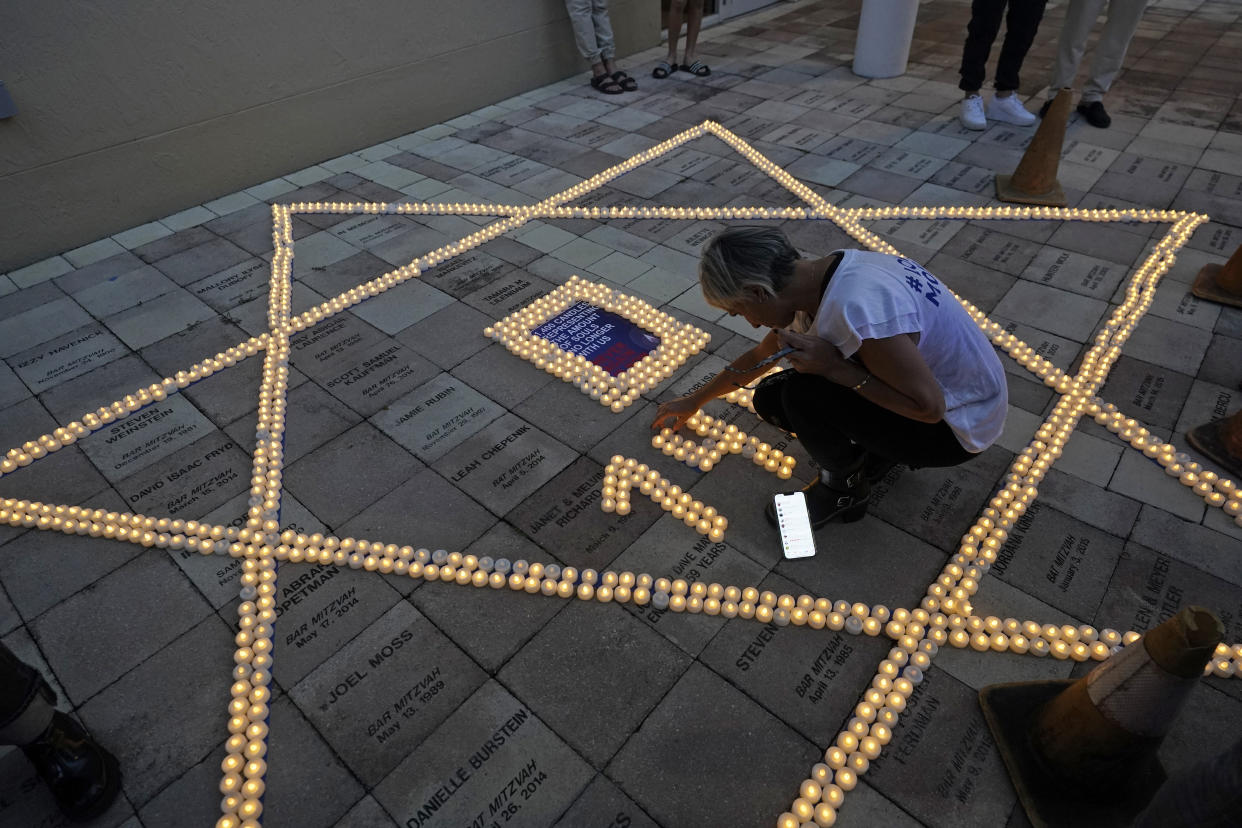Where the Israel-Hamas war stands, 2 months in

Thursday, Dec. 7 marks the first night of Hanukkah, usually a joyous time in Judaism that celebrates finding light in darkness. But this year’s festival of lights holds somber significance. Dec. 7 also marks two months since Hamas unleashed a brutal attack in Israel, killing about 1,200 people and taking approximately 240 others as hostage.
On the heels of Hamas’s rampage, Israel launched a military campaign against the Gaza-based militant group, which has devastated the Gaza Strip. At least 17,000 people have been killed since the start of the war, according to the Hamas-run Health Ministry. Israel also ordered a “complete siege” blocking off electricity, food, water and fuel to the enclave.
Here’s where the Israel-Hamas war stands, two months in.
What has happened in the past week
Israel resumed its military assault on Gaza following a temporary seven-day truce — mediated by the U.S., Qatar and Egypt — ended last Friday after the warring sides accused one another of violating the terms of the deal.
The Israel Defense Force said it has expanded operations to Khan Younis, Gaza’s largest southern city and one it considers a Hamas stronghold.
Israel’s military operation in Gaza
Israel says its goal, along with the release of hostages, is to eradicate Hamas’s military capabilities and remove it from power in the enclave.
Israeli forces have surrounded the home of Yahya Sinwar, the alleged mastermind behind the Oct. 7 attack, in Khan Younis. In a recorded video statement, Israeli Prime Minister Benjamin Netanyahu warned, “It's only a matter of time before we get him.” One of Israel’s objectives in its ground offensive against Hamas is to kill Sinwar.
Over the weekend, Israeli Defense Minister Yoav Gallant told ABC News he expects the war to continue with the same intensity for two more months, followed by multiple months of “mop-up” operations that would involve the Israeli military “taking out pockets of terrorist resistance.”
How many hostages are still in Gaza?
A total of 110 hostages have been freed since they were kidnapped by Hamas two months ago — including four previously released in October and one IDF soldier who was rescued by the IDF in late October.
In exchange, Israel has released more than 200 Palestinian prisoners as of last week, all of whom are women or teenagers.
An estimated 123 living hostages — including eight Americans — are still being held in Gaza, according to numbers provided by Israel.
Netanyahu has faced increased tensions at home as families of hostages still being held in Gaza and those recently released have expressed mounting anger over the Oct. 7 attack and the ongoing captivity of the remaining hostages.
The latest in Gaza
Over the past few days, an estimated 178,000 residents and 170,000 displaced Palestinians have been told to evacuate, according to the United Nations. Tens of thousands of displaced Palestinians are packed into the Rafah border crossing area on the Egypt border, designated as a “humanitarian zone” by the Israeli military.
The U.N. said that in recent days, a quarter of the city of Khan Younis area has been designated an evacuation zone by Israeli forces. Meanwhile, military operations also continue in northern Gaza, in Shujaiya and Jabaliya, the site of a major refugee camp.
As the death toll continues to mount in the Gaza Strip, Doctors Without Borders said on Wednesday that for the first time, the number of people killed had surpassed the number of injured people who had been brought to Al-Aqsa Hospital. The international humanitarian aid group said: “115 killed in 24 hours. The hospital is full, the morgue is full. We call on Israeli Forces to stop the indiscriminate bombing of the Gaza Strip and protect civilians and civilian infrastructure. We need a ceasefire now."
Recommended reading
NBC News:Israel's new grid maps add to confusion and anger in Gaza
ABC News: 'Concerned and afraid': Jews celebrate Hanukkah amid rise in hate
Associated Press:Israel and US are at odds over conflicting visions for postwar Gaza
Meanwhile, access to food and water grows dire in Gaza as the United Nations food agency said the war has caused “unimaginable loss, destruction and misery.” In northern Gaza, 97% of households have inadequate food consumption, with 9 out of 10 people consistently going a full day and night without food, a report from the agency found. While around 83% in southern Gaza are "adopting extreme consumption strategies" to survive.
Fuel shortages have brought Gaza’s health care system to the brink of collapse, and are also preventing the delivery of basic humanitarian supplies. A “minimal” increase in the amount of fuel entering Gaza was approved by the Israeli Security Cabinet on Wednesday to prevent “humanitarian collapse and the outbreak of epidemics.”
What the U.N. is saying
In a dramatic move, United Nations Secretary-General António Guterres invoked a rarely used power to sound the alarm and refer the dire situation in Gaza to the U.N. Security Council, warning its members of an impending “humanitarian catastrophe,” and called for a humanitarian ceasefire to be declared.
Israel said the move was “a new moral low” and that Guterres should resign.
How the U.S. is involved
The U.S. has called on Israel to comply with international humanitarian law and limit the amount of civilian deaths and Palestinians displaced in Gaza. Secretary of State Antony Blinken told reporters in Tel Aviv last week before the truce ended that Israel must have “a clear plan in place that puts a premium on protecting civilians as well as sustaining and building on the humanitarian assistance that's getting into Gaza.”
The U.S. remains by Israel’s side and has pledged unwavering support for its decision to defend itself.
Meanwhile, more than 500 staffers at over 140 Jewish organizations signed an open letter to President Biden calling for a ceasefire, the return of all hostages and lasting peace between the warring sides.
